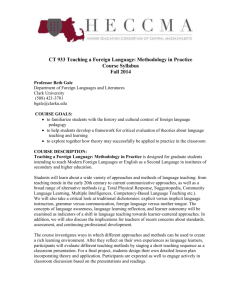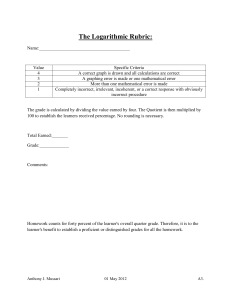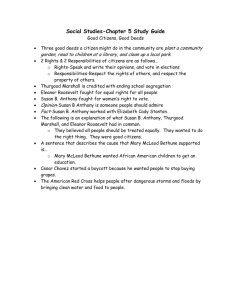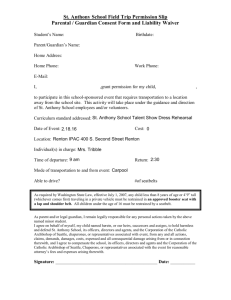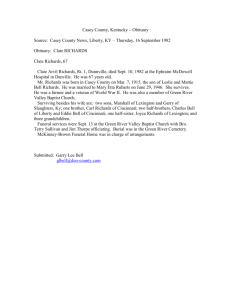Terms Used Differently - theories
advertisement
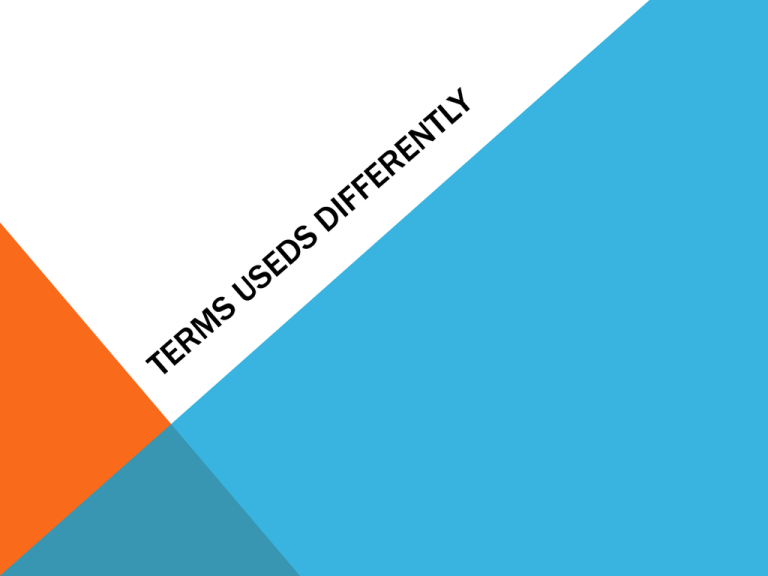
Approach, method, and technique—Edward Anthony Method, approach, design, and procedure— Richards & Rodgers Methodology, approach, method, Curriculum/syllabus, and Technique APPROACH Approach—a set of assumptions dealing with the nature of language, learning, and teaching. (Edward Anthony, 1963) Approach—defines assumptions, beliefs, and theories about the nature of language and language learning. (Richards & Rodgers, 1982) METHOD Method—an overall plan for systematic presentation of language based upon a selected approach (Anthony, 1963) Method—an umbrella term for the specification and interrelation of theory and practice (Richards & Rodgers 1982: 154). TECHNIQUE Techniques—the specific activities manifested in the classroom that were consistent with a method and therefore were in harmony with an approach as well. (Anthony) Procedures—the techniques and practices that are derived from one’s approach and design (Richards & Rodgers, 1986). ANTHONY (1963)CONCEPT OF METHOD Approach Method technique Approach: a set of assumptions dealing with the nature of language, learning, and teaching. Method: an overall plan for systematic presentation of language based on a selected approach. Techniques: specific classroom activities consistent with a method, and therefore in harmony with an approach as well. RICHARDS AND ROGERS (1986) Method Approach Design They revised and extended the original Anthony’s method and technique. A method is theoretically related to an approach, is organisationally determined by a design, and is practically realised in procedure. Procedure Method is seen as an umbrella term to capture redefined approaches, designs, and procedures . METHODS, APPROACHES, PROCEDURES Approach: refers to theories about the nature of language and language learning which are the source of the way things are done in the classroom and which provide reasons for doing them. Method: is the practical realisation of an approach. Procedure: is an ordered sequence of techniques WHY ARE METHODS NO LONGER THE MILESTONE? Brown (2002, p. 10) 1. Methods are too prescriptive, assuming too much about a context before the context has been identified. 2. Methods are quite distinctive at the early stage and rather indistinguishable from each other at later stages 3. One cannot determine which one is best through empirical research 4. Methods are often the creation of the powerful center and become vehicles of “linguistic imperialism” THE POST METHOD ERA Kumaravadivelu (1994, 2006) suggests what is needed is not alternative methods, but ‘an alternative to method’ He suggests 10 macrostrategies as broad guidelines, based on which teachers can generate their own situation-specific, need-based microstrategies or classroom techniques. POST METHOD ERA 1. Maximize learning opportunities 2. Facilitate negotiated interaction 3. Minimize perceptual mismatches 4. Activate intuitive heuristics 5. Foster language awareness 6. Contextualize linguistic input 7. Integrate language skills 8. Promote learner autonomy 9. Raise cultural consciousness 10.Ensure social relevance 2. Controlled to free techniques Controlled = teacher centered = manipulative = structured = predicted responses responses = pre-planned objectives Free = student centered = communicative = open-ended = unpredicted = negotiated objectives Taxonomy of techniques Controlled techniques - warm up - setting - organizational - content explanation - role-play demonstration - reading aloud - question-answer, display - drill - translation - dictation - copying - identification - review - testing Supporting materials Textbooks - Selecting a textbook is a complex task, different things must be taken into consideration: a) goals of the course b) background of students (age, education, native language, motivation) c) approach d) language skills (listening, speaking, reading, writing) e) general content (proficiency level, authenticity) f) quality of practice material (exercises, explanation, review) g) sequencing h) vocabulary i) sociolinguistic factors (variety of English, cultural content) j) format k) supplementary material (workbook, tapes, tests, posters) l) teacher´s guide (answer keys, alternative exercises) LANGUAGE-CENTERED METHODS Audiolingual method Preselected, presequenced linguistic structures through form focused exercises in class linear LEARNER-CENTERED METHODS Communicative language teaching Preselected, presequenced linguistic structures and communicative notions/functions through meaningfocused activities Form & function linear LEARNING-CENTERED Cognitive processes of language learning Natural method Nonlinear DESIGNER NONMETHODS Community language learning The silent way Suggestopedia Total physical response Humanistic approach Counselors PRINCIPLES AND PROCEDURES KUMARAVADIVELU Principles: A set of insights derived from theoretical and applied linguistics, cognitive psychology, information sciences, theoretical bases for the study of language learning, language planning and language teaching, syllabus design, materials production, evaluation measures Procedures: A set of teaching strategies adopted/adapted by the teacher in order to accomplish the stated and unstated , short- and ;long-term goals of language learning and teaching in the classroom. classroom events , activities or techniques
